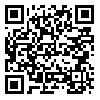Sat, Oct 25, 2025
[Archive]
Volume 18, Issue 3 (September 2022)
IJEEE 2022, 18(3): 147-154 |
Back to browse issues page
Download citation:
BibTeX | RIS | EndNote | Medlars | ProCite | Reference Manager | RefWorks
Send citation to:



BibTeX | RIS | EndNote | Medlars | ProCite | Reference Manager | RefWorks
Send citation to:
Fertas K, Fertas F, Tebache S, Mansoul A, Aksas R. Genetic Algorithm Based Approach for Frequency Switchable Dual-Band Patch Antenna. IJEEE 2022; 18 (3) :147-154
URL: http://ijeee.iust.ac.ir/article-1-2454-en.html
URL: http://ijeee.iust.ac.ir/article-1-2454-en.html
Abstract: (2575 Views)
In this paper, a frequency switchable antenna design using genetic algorithms (GAs) for dual band WiMAX (3.5GHz) and WLAN (5.2GHz) applications is proposed. The area of the radiating patch element is divided into 2 mm square cells, with each cell assigned a conducting or non-conducting characteristic. To realize frequency reconfiguration, switches are incorporated into appropriate locations to activate/deactivate corresponding cells. The on/off states of the switches are represented by the presence or absence of conductor, respectively. Hence, the proposed approach allows the antenna to operate as mono-band or dual-band radiator according to the desired application. Further, measurements and simulations are carried out and a reasonable agreement is achieved.
Full-Text [PDF 716 kb]
(1425 Downloads)
- A frequency switchable antenna design using genetic algorithms (GAs) for dual band WiMAX (3.5GHz) and WLAN (5.2GHz) applications is proposed;
- To realize frequency reconfiguration, switches are incorporated into appropriate locations to activate/deactivate corresponding cells;
- The on/off states of the switches are represented by the presence or absence of conductor, respectively;
- The proposed approach allows the antenna to operate as mono-band or dual-band radiator according to the desired application.
Type of Study: Research Paper |
Subject:
Antenna
Received: 2022/03/10 | Revised: 2024/05/13 | Accepted: 2022/06/29
Received: 2022/03/10 | Revised: 2024/05/13 | Accepted: 2022/06/29
| Rights and permissions | |
 |
This work is licensed under a Creative Commons Attribution-NonCommercial 4.0 International License. |








